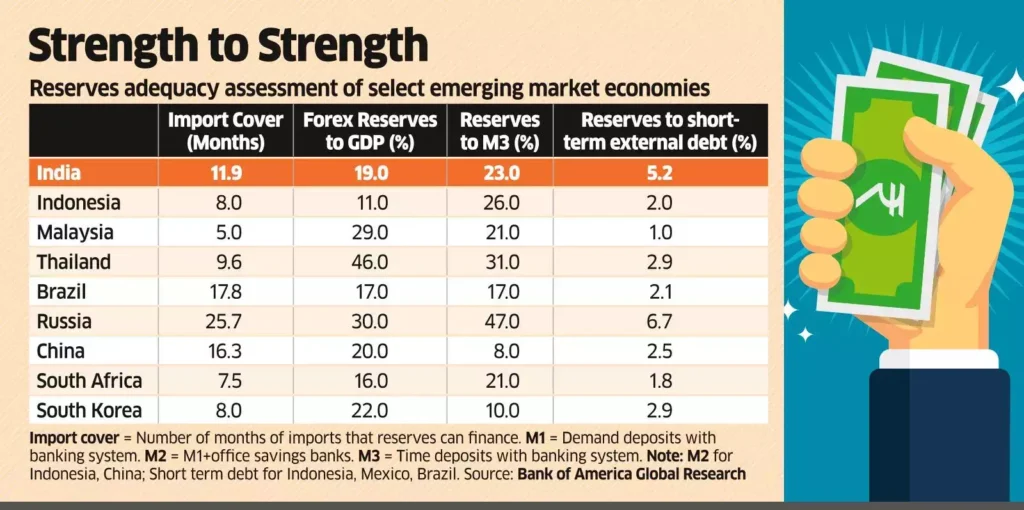India’s Forex Reserves Reach New Heights
India has recently made headlines by reaching $700 billion in foreign exchange (forex) reserves, placing the country fourth in the world, behind China, Japan, and Switzerland. This is a major achievement, as having such high reserves acts as a safeguard in times of global financial instability. However, the composition of these reserves raises some concerns. India’s reserves are primarily in US dollars, while other countries are starting to move away from the dollar. This situation could have important consequences for India in the future.

The Shift Away From Dollar Dominance
While India continues to hold a large amount of US dollar-denominated reserves, other countries are taking a different approach. China, for instance, has significantly reduced its dollar holdings from $8 trillion to just $800 billion. This reduction is part of a broader trend as many countries, particularly those in the BRICS group (Brazil, Russia, India, China, and South Africa), are exploring alternative payment systems. A growing number of countries, 149 out of 195, are considering platforms that reduce reliance on the US dollar. If this trend continues, the dollar could lose its dominance more quickly than expected, which could impact India’s dollar-heavy reserves.
The Potential Impact of Rising Oil Prices
Another factor that could affect India’s forex reserves is the price of crude oil. For the past 15 years, oil prices have remained relatively stable, hovering between $70 and $80 per barrel. However, with the massive amount of money printed globally in recent years, it is unlikely that oil prices will stay at these levels forever. If oil prices were to rise into the triple digits, it could put significant pressure on India’s forex reserves, given the country’s reliance on imported oil. Managing this challenge will be crucial for India’s financial stability.
India’s Strategic Position in the Commodity Cycle
We are currently in a long-term upward cycle for commodities like gold, silver, and oil. This cycle suggests that prices for these essential resources could continue to increase. While oil has stayed steady, other commodities are already showing signs of growth. If oil prices spike, India may find itself in a difficult position. However, the country’s substantial forex reserves may provide some relief in the short term, allowing India to weather any immediate shocks in the global commodity markets.
The Need for Diversification
Although India’s forex reserves are a strong asset, there is a growing need for diversification. Other nations are reducing their dependence on the US dollar, and India may want to consider doing the same. By increasing its exposure to other currencies and assets like gold, India could better protect itself from global economic shifts. Diversification could help India maintain its financial stability in the face of changing international trends.
Disclaimers and disclosures : https://tinyurl.com/2763eyaz
If you have any questions, please write to support@weekendinvesting.com













